#kawaiisu
Text

Kawaiisu Basket Bowl
The stepped radial design of this exquisitely-woven basketry bowl, with red bands of yucca root bounded by a double-border of black-dyed bulrush, is characteristic of the Kawaiisu basketweavers of the Tehachapi Valley region of Kern County, California.
22 notes
·
View notes
Text
As anthropologist Jay Miller has observed, "Hunting tribes were also astute enough observers . . . to notice that other Animal People had hermaphroditic members, and often equated these with the berdaches [two-spirits]."⁶⁵
65. Miller, "People, Berdaches, and Left-handed Bears", p. 286. Whether direct knowledge of animal homosexuality (rather than transgender) has contributed to indigenous belief systems remains an open question, although it seems likely that observation of a species' same-sex activity may also have been a factor in its status as a shamanic "power animal". Although there are no specific reports of this in the ethnographic literature (which is, however, notoriously incomplete with regard to matters of sexuality, particularly homosexuality), there are several suggestive cases. In a number of Native American cultures, animals are selected as symbolically important for shamanistic practices because their biology and behavior exhibit particularly salient or "unusual" features. In the Pacific Northwest culture region, for example, "animals that shamans relied on as spirit helpers [including shore birds, sea mammals, otters, and Mountain Goats] were those that inhabit border areas of the environment such as the shoreline, the water's surface, or the tops of trees. Their behavior was thought to represent the supernatural ability to move through the different zones of the cosmos" – echoing the shaman's ability to traverse different worlds. (This also corresponds to the well-established ecological principle in Western science that the greatest diversity, flexibility, and environmental richness is to be found in the border zones between major ecosystems, such as the region where forest meets grassland.) This is especially true for the (American) oystercatcher, whose preeminent status as a spirit animal in Tlingit shamanism is based not only on its inhabiting border zones, but also its furtive behavior and habit of being among the first creatures to sound alarm at the approach of danger (likened to the shaman's function as "guardian" for his or her people) (Wardwell, A. [1996] Tangible Visions: Northwest Coast Indian Shamanism and Its Art, pp. 40-43, 96, 239 [New York: Monacelli Press]; for similar observations concerning totemic or shamanic animals in Yup'ik and New Guinean cultures, see Fienup-Riordan, Boundaries and Passages, pp. 124, 130-31, and Jorgensen, "Echidna and Kuyaam", pp. 374, 378. Homosexuality is also part of the biological repertoires of many of these species (e.g., various shore birds, sea mammals, and Mountain Goats) or else of their close relatives (e.g., the [Eurasian] Oystercatcher). It is possible, therefore, that observed sexual variance in animals – paralleling the shaman's straddling of sexual boundaries – might also have contributed to the spiritual importance of such creatures. Another interesting example concerns red ants, which feature prominently as shamanic helpers in a number of indigenous cultures of south-central California (all of which, incidentally, recognize two-spirit people). The religious and cultural importance of ants is tied to their powerful medicinal and hallucinogenic properties as well as their use in ritual activities. This includes the extraordinary practice of swallowing large quantities of live ants to induce visions and the acquisition of spirit-animal helpers. Although no homosexual activity has yet been reported for these species (identified as belonging to the genus Pogonomyrmex), nor is human gender or sexual variance directly associated with these ant-related beliefs or practices, there are some intriguing clues. Recently, for examples, homosexual activity was discovered in a different species of Red Ant (Formica subpolita) endemic to the semidesert regions of the western United States (O'Niell 1994:96). Moreover, among the Kawaiisu people (where shamanic ant practices are especially prominent), unusual habits of animals are singled out as a potent spiritual sign, and two-spirit people (who may occupy positions of power, e.g., as chiefs) are reported to be particularly attuned to such animal behaviors (Groark, K. P. [1996] "Ritual and Therapeutic Use of 'Hallucinogenic' Harvester Ants [Pogonomyrmex] in Native South-Central California", Journal of Ethonobiology 16:1-29;
Zigmond, M [1977] "The Supernatural World of the Kawaiisu", pp. 60-61, 74, in T. C. Blackburn, ed. Flowers of the Wind: Papers on Ritual, Myth, and Symbolism in California and the Southwest, pp. 59-95 [Socorro, N. Mex.: Ballena Press]). Once again, it is not unreasonable to suppose that indigenous knowledge or observations of homosexuality (or other sexual variance) in red ants might have been an additional factor in their elevation to religious prominence. Certainly these examples are highly speculative, but they suggest some fascinating connections between animal biology, shamanic practices, and two-spiritedness that deserve further investigation.
"Biological Exuberance: Animal Homosexuality and Natural Diversity" - Bruce Bagemihl
#book quote#biological exuberance#bruce bagemihl#nonfiction#anthropologist#jay miller#people berdaches and left handed bears#hermaphrodite#two spirit#shamanism#red ant#hallucinogens#oystercatcher#tlingit#yup'ik#new guinea#pogonomyrmex#formica subpolita#kawaiisu
2 notes
·
View notes
Note
I'm running a tabletop RPG campaign where the characters are interacting with folklore creatures from around the world. Do you have any suggestions? Benevolent, scary, weird...
(please avoid things that are sacred I'm using them in a trpg)
Hrm… have you considered asking @thecreaturecodex ? She knows all about that sort of thing. I wouldn’t know an RPG if it crawled up my legs and bit me in the face.
Creatures from around the world though, that’s not very specific… I can think of some random ones I’ve covered over the years, I guess???

The Vatnagedda (Iceland) or Loch Pike looks like a furry golden flounder that lives in lakes. It is so poisonous that merely touching it is deadly, and a dead one can corrode its way through organic and inorganic matter. In fact even ghosts are afraid of it, and one of those buried at the doorstep of a house will keep them away. It can only be held safely with humanskin or skateskin gloves, and wrapped in human and calf cauls.
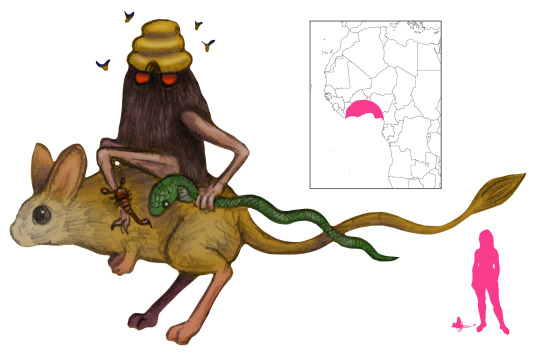
The Zankallala (Hausa) is a little gnomish being who has a bee swarm for a hat, a snake for a walking stick, scorpions for spurs, and a jerboa for a mount. It is accompanied by birds who sing about how amazing it is. It can effortlessly kill monsters and protects those attacked by them.

The Colôrobètch (Wallonia) is the personification of the winter wind. It sneaks up on children who haven't bundled up enough and nips at their faces with its beak, leaving red, cracked, painful skin behind.

Haakapainiži (Kawaiisu) or Grasshopper is an ogre who captures children and stores them in a basket to eat later. He uses the sharp spikes on his legs to gouge out people's eyes. He can also shapeshift, taking on the form of a harmless old man or a swarm of grasshoppers.

The Zabraq (Middle East) can leap 30-50 cubits in a single bound. Its urine and feces are highly caustic, and it flings them with its tail to kill its prey. If its prey escapes it by climbing a tree, it roars in fury until it vomits blood and dies.

<blocks your path>
#last time I got an unspecific ask I didn't know what to say and made the asker unhappy#so#random stuff! yay!#body horror#blood#possibly
103 notes
·
View notes
Text
FOTD #102 : lace lichen! (ramalina menziesii)
lace lichen (also fishnet lichen) is a fruticose epiphytic lichen in the family ramalinaceae. it is found across north america & plays multiple important ecological roles :-) the indigenous kawaiisu people of california reportedly used it for its magical properties*.
the big question : can i bite it??
nah - it is mostly inedible for humans, but it is an important food source for deer in the coast range of california !!
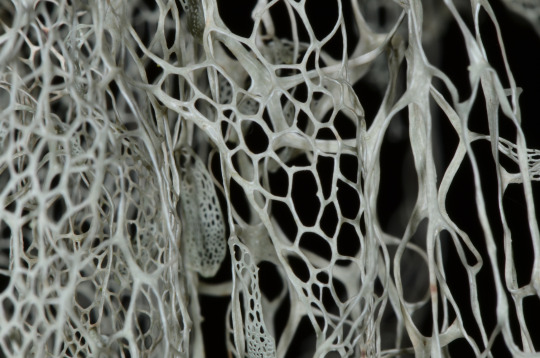
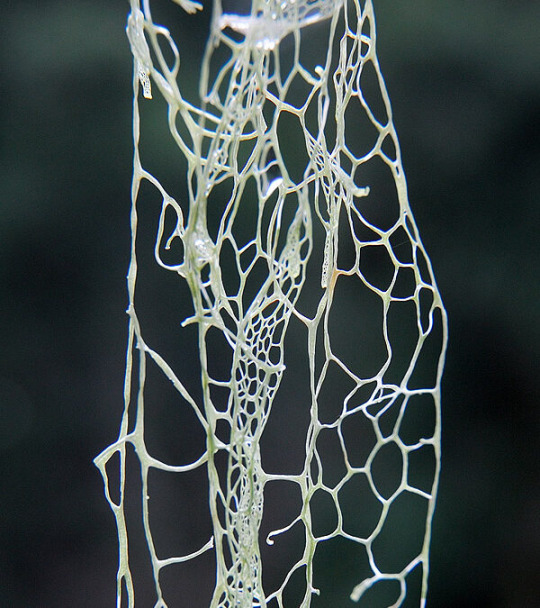
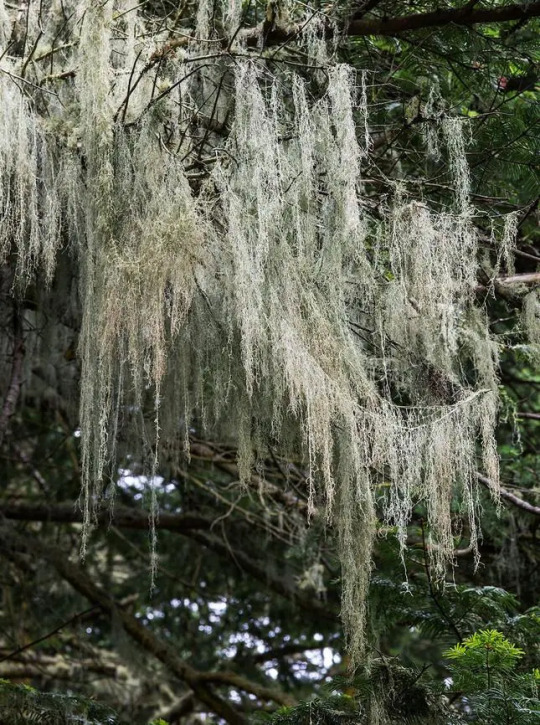
r. menziesii description :
"this lichen grows up to a meter long, hanging from bark & twigs in a distinctive net-like or lace-like pattern. it is white to light green."
[images : source, source & source]
[fungus description : source]
*so, this was one of the first recorded instances of people using this lichen !! apparently, they would place it in water to bring rain, & place it in fire to repel thunder or lightning :-) the kashaya pomo people of northern california would also use it, but as a "sanitary material" (which i assume means like toilet paper?).
#• fungus of the day !! •#[ramalina menziesii]#: lace lichen :#: fishnet lichen :#102#||#fungi#mycology#nature#earth#cottagecore#fungus#forestcore#foraging#fotd#fungus of the day#ramalina menziesii#lace lichen#fishnet lichen#lichen
59 notes
·
View notes
Text
Haakapainizi

“Grasshopper” © Sergei Ashihmin, accessed at his ArtStation here
[The haakapainizi is a bogey from the legends of the Kawaiisu people of southeastern California. I know of it through @a-book-of-creatures. A grasshopper is a weird choice for an ogre from a Western standpoint, but they are pretty freaky looking, especially big lubber grasshoppers. It is said by the Kawaiisu that it can cover twenty miles in a single step, which gave me an excuse to come up with mechanics for the classic fairy tale concept of seven league boots (seven leagues = twenty one miles)]
Haakapainizi
CR 14 NE Magical Beast
This vile creature looks like a grasshopper the size of a rhinoceros, with spiny hind legs and small covering its abdomen. Its head is disturbingly similar to a human face, with a lower jaw split into savage mandibles. It carries a basket on its back.
The haakapainizi is a bogeyman of the deserts, a cruel shapechanger that feeds preferentially on the weakest members of society; children, the sick and the elderly. It can take the guise of either a mundane humanoid or a giant, and prey on the children of stone and desert giants as readily as those of humans or gnolls. Their preference for the weak is partially out of spite and partially out of sloth. A haakapainizi is a powerful combatant, but they would rather take easy victims than exert themselves, and they delight in the tragedy that their depredations cause.
Haakapainizi prefer subtlety and trickery, luring victims into striking distance with sweet words or proffered gifts. That these gifts are their own vile secretions is the first cruelty they heap on their victim, before grabbing them, stuffing them into their magical baskets and leaping away. A creature in the basket is usually overwhelmed by a powerful enchantment and can only be rescued from without. If cornered or prevented from escaping, they will engage in a full on brawl with their claws, mandibles and a powerful kick. If opponents can regularly do damage to them in melee, they transform into a swarm of locusts, both to avoid weapon damage and to make themselves more maneuverable and easily hidden. Haakapainizi rarely fight to the death, but their gluttonous natures sometimes do get the better of them.
A haakapainizi lairs in a cave or hut distant from its hunting ground. They can leap so quickly that it is effectively teleportation, traveling miles with a single bound. This is not very precise travel, so they do not use it to hunt or ambush prey (although they won’t hesitate to attack if they accidentally come upon a potential victim). They have no friends and no allies; haakapainizi are peevish and temperamental and reject any sort of companionship except as a ruse in order to attract a victim. How they reproduce given their universal misanthropy is unclear—perhaps they are transformed from mundane grasshoppers that scavenge on humanoid flesh. Despite their many strengths, haakapainizi are somewhat weak willed, and can easily succumb to mind-influencing magic. The cult of Deskari sometimes uses them as charmed minions, but the shapeshifters bear no love or loyalty to the Lord of the Locust Host.
Haakapainizi CR 14
XP 38,400
NE Large magical beast (shapechanger)
Init +5; Senses darkvision 60 ft., low-light vision, Perception +10, scent
Defense
AC 29, touch 14, flat-footed 25 (-1 size, +5 Dex, +14 natural)
hp 200 (16d10+112)
Fort +17, Ref +15, Will +8
DR 10/magic; SR 25
Offense
Speed 40 ft., fly 40 ft. (poor)
Melee 2 claws +23 (1d6+8/19-20 plus grab), bite +23 (1d8+8), kick +21 (1d12+12 plus push)
Space 10 ft.; Reach 5 ft. (10 ft. with kick)
Special Attacks basket, fool’s gift, powerful blows (kick), push (10 ft.)
Statistics
Str 26, Dex 21, Con 24, Int 15, Wis 12, Cha 19
Base Atk +16; CMB +25 (+29 grapple); CMD 40 (48 vs. trip)
Feats Blinding Critical, Combat Reflexes, Critical Focus, Deceitful, Improved Critical (claw), Iron Will, Multiattack, Power Attack
Skills Acrobatics +18 (+34 when jumping), Bluff +18, Climb +17, Craft (weaving) +10, Disguise +18, Fly +1, Intimidate +10, Perception +10, Stealth +11; Racial Modifiers +12 to Acrobatics when jumping
Languages Common, Giant, Sylvan
SQ change shape (humanoid or giant, alter self or giant shape I), seven league leap, swarm form
Ecology
Environment warm desert and hills
Organization solitary
Treasure standard
Special Abilities
Basket (Su) If a haakapainizi begins its turn with a creature grappled in its claws, as long as the creature is size Medium or smaller, it can stuff the target into its basket as a swift action that does not provoke attacks of opportunity. A creature in the basket must succeed a DC 22 Will save or be dazed as long as it remains in the basket, and for 1 round thereafter. A creature that succeeds this save is immune to the dazing effect of the basket for the next 24 hours. This is a mind-influencing ability and the save DC is Charisma based. A creature in the basket can try to cut its way free with any light slashing or piercing weapon. The basket has AC 17 and 20 hit points. If a creature cuts its way out of the basket or the basket is damaged enough to allow a victim to escape, the haakapainizi cannot put prey in its basket again until it has spent 1 hour mending it.
The basket has other special qualities while in the haakapainizi’s possession. The weight of creatures in the sack do not count against the haakapainizi’s carrying capacity, and the haakapainizi can fit up to two Small creatures or one Medium creature in the basket at a time. If used by any creature other than the haakapainizi that owns it, this container functions as a mundane basket. If a haakapainizi’s basket is lost or destroyed, it can craft a new one with proper materials and a week of work.
Fool’s Gift (Su) As a standard action, a haakapainizi can produce a lump of mucus and cloud the mind of a creature within 30 feet, making them think that it is delicious food that they are compelled to consume. Unless the creature succeeds a DC 22 Will save, it spends its next actions moving towards the haakapainizi, taking the mucus (a standard action) and eating it (another standard action). Once a creature eats the mucus, it must succeed a DC 25 Fortitude save or be nauseated for 1 minute. The save DC for the compulsion effect is Charisma based, and the save DC for the nausea effect is Constitution based.
Seven League Leap (Su) As a full round action that provokes attacks of opportunity, a haakapainizi can leap up to 21 miles, arriving at its destination instantly. This travel is imprecise—it arrives 1d10x100 feet away from its intended destination in a random direction. A haakapainizi can use this ability a number of times per day equal to its Strength modifier.
Swarm Form (Su) As a standard action, a haakapainizi can transform itself into a swarm of Diminutive locusts. In this form, it cannot use natural attacks, its basket, fool’s gift or seven league leap abilities, but its flying maneuverability increases to good, it gains a swarm attack and gains the distraction special attack. It can resume its normal form as a standard action. A haakapainizi’s statistics in swarm form differ from its normal statistics as follows: AC 28, touch 28, flat-footed 18 (+8 size, +10 Dex); Ref +20; Defensive Abilities immune to weapon damage, swarm traits; Attack swarm (4d6 plus distraction); Special Attacks distraction (DC 25); CMB -; CMD -; Skills Acrobatics +23, Fly +17, Stealth +36
70 notes
·
View notes
Photo

This weekend, check out language stories by community members themselves!
Less than 200 years ago, 90 Native languages and as many as 300 dialects were spoken in California. Today, only half are spoken but ambitious projects are revitalizing them.
Join us in listening to Emergence Magazine's Webby Award winning Language Keepers podcast on the stories of Wukchumni, Karuk, Kawaiisu, & Tolowa Dee-ni'.
https://emergencemagazine.org/story/language-keepers
55 notes
·
View notes
Link
Wanna see something pure and good? Check out this project to enrich some of California’s indigenous languages.
0 notes
Text
Amongst Wind River Shoshoni, a community who still live in some of their ancestral territories in the Wind River Valley and the Grand Teton, Wyoming.
The principal aim of a vision quest is to ‘see’ a spirit animal that will become the quester’s animal-helper and source of his power. Amongst the Shoshoni, a suppliant desiring a vision mounts his horse and rides up into the hills where there are already rock art images. He washes, and clothed in only a blanket he lies down on a ledge below the images. His vision is induced by fasting, enduring cold and lack of sleep, and smoking hallucinogenic tobacco. Some reports say that it may take three or four days before a vision comes to the suppliant – if at all.
It is known that sleep, specifically REM sleep, consolidates memories as neurons fire rapidity repeating the patterns during the day. When REM sleep is deprived over a period of time, dreams break into waking conciousness. So the vision comes when the quester is awake but sometimes tobacco was smoked just prior to sleep: drug-induced hallucinations would thus be experienced during sleep. Occasionally people may also experience spontaneous waking visions without sleep deprivation.
Significantly, the Shoshoni use the word "navushieip" to denote both dreaming and waking. This is also true of other groups, such as the Yokuts. Their divisions of the spectrum of consciousness thus accord dreaming the same status as waking for the reception of information. (In some parts of North America ‘waking visions’ are, however, discounted.) The dreams in which spirits appear are more vivid than other dreams; the Shoshoni say that they hold your attention and you cannot awake until they are over. Visions may be mercurial: for instance, a ‘lightning spirit’ may appear as a body of water, then like a human being, then like an animal. Often frightening animals come to threaten suppliants, and they must brave them if their power-giving spirit animal is to appear. During visions, questers feel that they leave their bodies – the sensation of out-of-body travel.
Throughout North America, this travel often involves entering a hole in the rock, passing though a tunnel, evading various monsters and seeing a spiritual personage, the Master of the Animals, and his creatures. After receiving power, the shaman may emerge from a different place, sometimes via a spring. ‘“Entering a cave” or rock was a metaphor for a shaman’s altered state; therefore, caves (and rocks more generally) were considered entrances or portals to the supernatural world.’ i might add, that flight and entering a cloud were further metaphors for shamanistic travel. During vision quests, North American shamans sometimes bled from the nose and mouth. The parallels with the southern African accounts of extra-corporeal, hallucinatory travel are arresting. Entry into the rock, movement through a tunnel, encounters with spirits and animals, emergence elsewhere through water, flight, and nasal haemorrhaging are experiences common to both continents.
Some ethnographic reports indicate that Native American people believed that rock art images were made, not by the quester, but by spirits, commonly named as ‘water babies’, ‘rock babies’, or ‘mountain dwarves’. These spirits were especially powerful shamans’ spirit helpers; they could be seen only in an altered state of consciousness. A shaman was so intimately identified with his spirit helper that is to say that a rock art image was made by a ‘rock baby’ was the same as saying that the shaman himself made it. To illustrate this point, a Native American informant told interviewers that rock art sites were created by shamans who ‘painted their spirits (anit) on rocks “to show themselves, to let people see what they had done”. The spirit must come first in a dream.’ Maurice Zigmond found that, amongst the Kawaiisu of south-central California, it was believed that a spirit named Rock Baby dwelt in the rock and made rock paintings. If one returned to a rock art site and found that more images had appeared since one’s previous visit, they were said to be the handiwork of Rock Baby. If one touched a rock painting and then rubbed one’s eyes, sleeplessness and death could result. The images thus possessed inherent power, rather like those in southern Africa: they were not merely pictures. As early as the 1870s, J. S. Denison reported that a Klamath man told him that rock paintings ‘were made by Indian doctors [shamans] and inspired fear of the doctor’s supernatural power’. Similarly, a 1900 report records that, among the Thompson, ‘rock paintings were made by noted shamans’, and in the 1920s Glenn Ranck found that ‘[o]ne night a Wishram North American medicine man [shaman] used an unseen power to paint a pictograph during the night. He was found in a trance at the foot of the pictograph the next morning’. Such reports could be multiplied many times over: the link between North American shamans and rock art is indisputable. But that realization is only the beginning – not the end – of research. Vision quests were not one-off affairs. Shamans usually repeated quests throughout their lives. They believed that their power could be increased in this way. When a shaman had received a vision in a dream, he awoke and concentrated on it so that he would not forget it. At dawn he went into the hill to experience more dreams. When he had received sufficient revelations, he entered his ‘shaman’s cache’ to converse with his spirit helper.
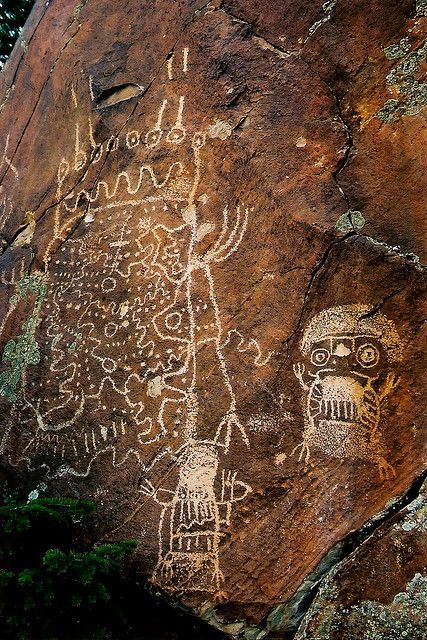
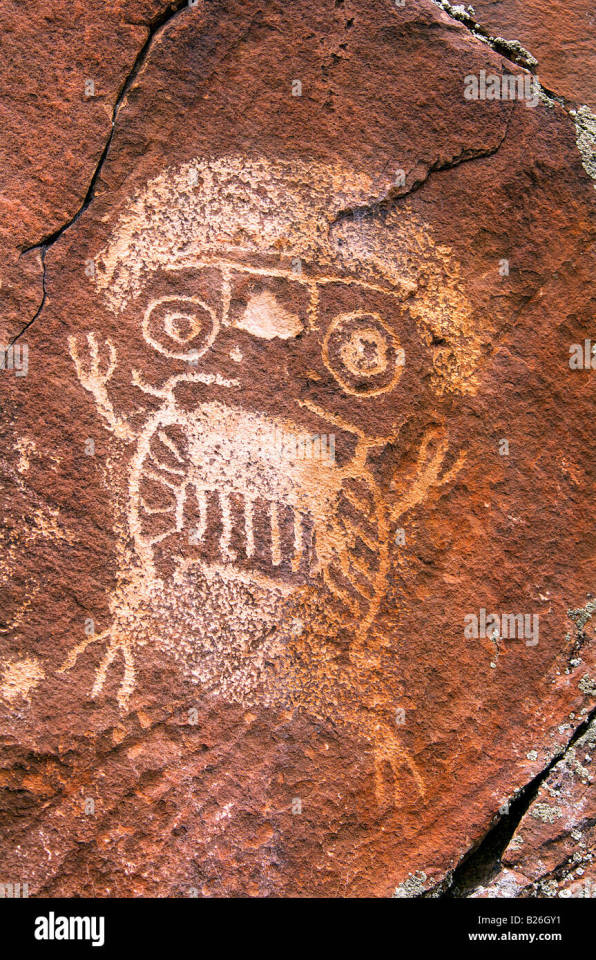
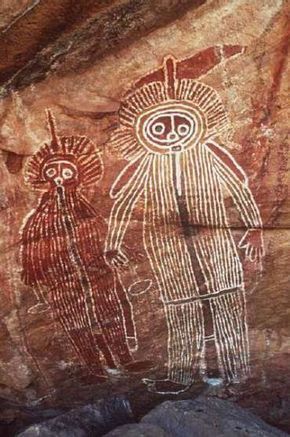

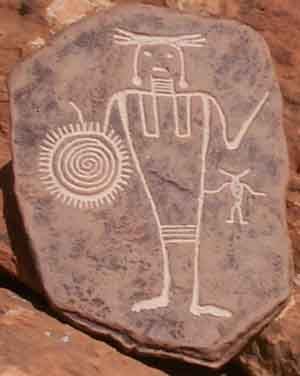


12 notes
·
View notes
Quote
The Native Americans had many medicinal uses for the red and blue elder in the Pacific Northwest, and in other parts of North America. Generally speaking, with the blue elder Sambucus cerulea, the leaves were used for a wash externally applied for blood poisoning, taken for new colds and as a purgative. An infusion of the flowers was taken internally for fevers, headaches, measles, colds and stomach troubles. A decoction of the bark was used as a wash for pain and for swelling, old sores, itching skin and also for bruises. Some specific information gives more of a range of the uses. The Houma tribe used a decoction of the bark as a wash for pain and an herbal steam bath was made with the leaves and flowers by the Kawaiisu tribe for headaches and colds. Similarly, the Okanagan-Colville tribe took the dead stalks and used them in a steam bath for rheumatism and arthritis. The fresh bark could also be applied topically for toothache. The Karok tribe used a wash made from the branches in a ceremony for a sick child, called the Brush Dance. The Montana Indian tribe used an infusion of the flowers taken internally for lung troubles. The Yokut tribe used fresh bruised leaves as a poultice for burns. An infusion of the flowers was given to babies with a fever and for teething by numerous tribes.
With the red elder Sambucus racemose var. pubens generally speaking, a poultice of the leaves and bark was applied for pain, rheumatism and swellings. A poultice of the pounded leaves was applied for boils and abscesses. An infusion of the roots and bark was taken as a purgative and for colds. A few more specific uses of note - the Quinault tribe used the bark applied as a poultice when a woman started breastfeeding. The Nitinaht tribe combined red elder bark with black twinberry Lonicera invulucrata for nervous breakdowns. The Quileute used the bark or roots for women during labor, taken internally in an infusion. A medicine was made for those affected by witchcraft out of red elder bark, juniper roots and cow parsnip roots by the Gitksan tribe. The Kwakiutl tribe used the bark in a steam bath for women to help relax them after child birth.
Corinne Boyer - Under the Witching Tree: A Folk Grimoire of Tree Lore and Practicum
17 notes
·
View notes
Photo


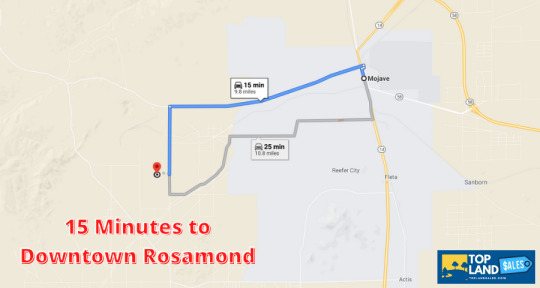
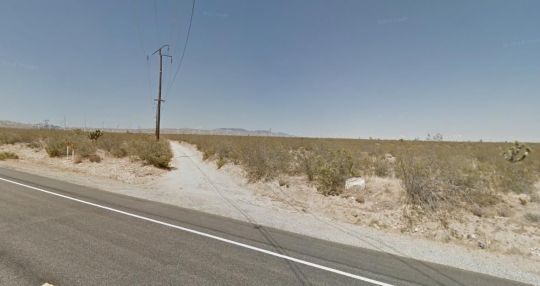
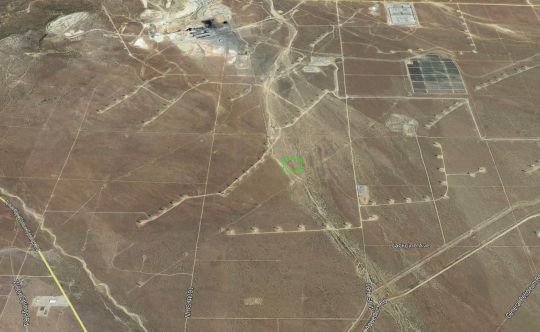
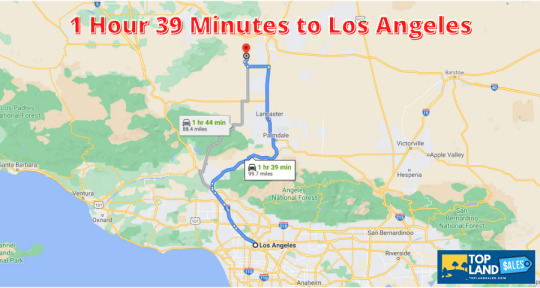
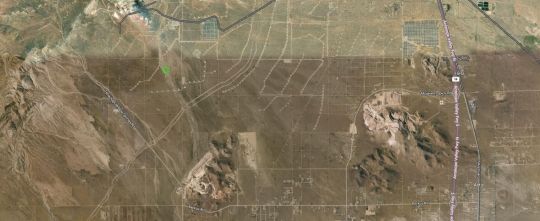
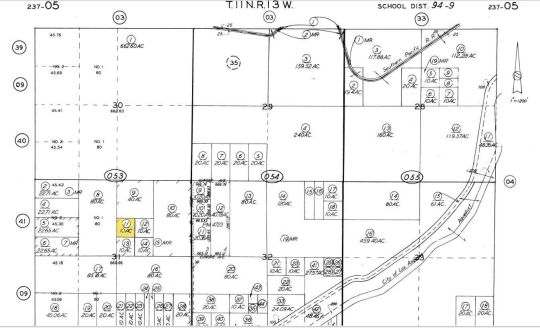


Wanna take a break from the bustling streets of the city and just sit back and relax on your hammock, breathing in fresh, cool air? Then, we’ve got the perfect place for you. This 10-acre-wide rough diamond in the far-off hillsides of Mojave, California rests along 90th St. W and is surrounded by the vast plains of Kern County. It enjoys the warmth of the soft Californian sun during the day and draped by starry skies at night.
Mojave is a community in Kern County, California, United States and is located 50 miles east of Bakersfield, and 100 miles north of Los Angeles. Although located a bit on the far side of the city, your new property is not all that distant from what the city has to offer such as, its diverse cuisine selection and outdoor recreational areas.
Explore the Mojave National Preserve
For only a 2-hour drive down East of your new property is the Mojave National Preserve – the third largest site ran by the National Park Service in the United States. Its vast wilderness offers a variety of outdoor activities such as camping and hiking all the while learning more about its rich history. Northeast of the park is the historic cross that serves as a memorial to war veterans. While, at the middle, is the Kelso Depot – a beautiful railroad depot and was once a prominent railroad stop not turned into a museum.
Great Outdoor Recreational Areas
33 minutes up North from your property is the Tomo-Kahni State Historic Park where you can get to learn about the Kawaiisu people and their form of living. Also, some of the plants that are native to the place are presented during the tour.
You can also get up close and personal with some of the world’s big cats in the Exotic Felines Breeding Compound located on Rosamond Dr. just 21 minutes away from your property.
While you’re there, take on a side trip at the Willow Springs International Raceway and the Rosamond Summit.
What are you waiting for? Call us now and know more about the offer!
THIS IS YOUR OPPORTUNITY TO OWN A PRIME BUILDING LOT FOR ONLY $15,000!!
Not ready for a cash purchase? NO PROBLEM!
We offer Seller Financing!! – No Credit Checks, Flexible Payment Terms
Pricing Details:
Cash Price: $15,000
Financing Price : $18,999
Down Payment : $5,999
Monthly Payment: flexible
Property Details:
County: Kern
State: CA
Parcel Number: 237-053-11-00
Size (in acres): 10 Acres
City: Mojave
Zip Code: 93501
Center GPS Coordinates: 35.0045, -118.2999
GPS Coordinates of Lot Corners:
35.00544, -118.30106
35.00365, -118.30106
35.00365, -118.29885
35.00546, -118.29883
Elevation: 3251.3 ft
Road Access: Landlocked
Terrain: Hillside
Electricity: Cannot determined what company services in the area
Sewer: Would need to install septic
Water: Would need to dig a well
Zoning: A-1 (LIMITED AGRICULTURE)
Annual Taxes: $261.84
HOA: County doesn't have information on this, they suggest confirming this to the owner
What type of construction:
Buy this property today for just $15, 000!
Interested? Call or Text Neel @ 928-286-7286 or email [email protected].
You can also visit our website at www.toplandsales.com for more details.
1 note
·
View note
Text
Creatures of the Week
From the Myths and Legends Podcast
I’ve been searching around for a list of all the creatures of the week from the Myths and Legends podcast, but hadn’t really found anything. So I decided to make the list myself. Seeing as my only followers are porn-bots and my sister, I’m likely talking to myself.
Ep. 1A) Huldefolk (Iceland)
Ep. 1B) Changelings (Ireland)
Ep. 1C) Akename (Japan)
Ep. 2A) Alp (German)
Ep. 2B) Encantado (Brazil)
Ep. 3A) Barbegazi (Swiss, French)
Ep. 3B) Fossegrim (Scandinavian)
Ep. 3C) Clurichaun (Irish)
Ep. 3D) Bakezori (Japanese)
Ep. 3E) Cat Sìth (Scottish)
Ep. 4) Hidebehind (USA)
Ep. 5A) Boo Hag (USA)
Ep. 5B) Kapre (Philippines)
Ep. 6A) Mooinjer Veggey (Gaelic)
Ep. 6B) Qiqirn (Inuit)
Ep. 6C) Dullahan (Irish)
Ep. 7) Satori (Japanese)
Ep. 8) Kikimora (Slavic)
Ep. 9) Nuno Sa Punso (Philippines)
Ep. 10A) Squonk (USA)
Ep. 10B) Kamaitachi (Japanese)
Ep. 11) Fynoderee (Manx/Isle of Man)
Ep. 12) Oozlum Bird (Australia/British)
Ep. 13A) Şüräle (Turkic)
Ep. 13B) Saci (Brazil)
Ep. 15) Tikbalang (Philippines)
Ep. 16) Babanshee (Scotland)
Ep. 17A) Lidérc (Hungary)
Ep. 17B) Leshy (Russia)
Ep. 17C) Muryans (Cornish)
Ep. 19) Bunyip (Australia)
Ep. 20) Hyakume (Japanese)
Ep. 21) Vodyanoy (Slavic)
Ep. 22A) Manociello (Italy)
Ep. 22B) Nguruvilu (Chile)
Ep. 22C) Tokoloshe (South Africa)
Ep. 23) Wood Wife (Germany) (Couldn’t catch the German name, Gernweibel or something)
Ep. 24) Patupaiarehe (Māori)
Ep. 25) Para, Butter Cat (!) (Finland)
Ep. 26) Blue Men of the Minch (Scotland)
Ep. 27A) Mahaha (Intuit)
Ep. 27B) Penanggalan (Malaysia)
Ep. 27C) Mandragora (Europe)
Ep. 28) Gooseberry Wife (Isle of White)
Ep. 29) Itachi (Japan)
Ep. 30) Abatwa (South Africa)
Ep. 31A) Drak (English, French, Scottish)
Ep. 31B) Abbey Lubbers, Buttery Sprites (England)
Ep. 32) Kludde (Belgium)
Ep. 33) Nix (Scandinavia, Germany, Switzerland)
Ep. 34) Gashadokuro (Japan)
Ep. 35) Papa Boi (Trinidad)
Ep. 36A) Langsuir (West Malaysia)
Ep. 36B) Ra/Radandar (Sweden)
Ep. 37) Mamagwasewug (Native American)
Ep. 38A) Sala (Arabia)
Ep. 38B) Cactus Cat (USA)
Ep. 39) Sandman (German)
Ep. 40) Hyōsube (Japan)
Ep. 41A) Gumberoo (USA)
Ep. 41B) Korrigan (British Isle)
Ep. 41C) Laminak (Basque)
Ep. 42) Lutin (France)
Ep. 43) Abda (Russia)
Ep. 44) Aobōzo (Japan)
Ep. 45) Poludnica (Slovenia)
Ep. 46A) Puckwugie (Native American)
Ep. 46B) Roaring Bull of Bagberry (Wales, England)
Ep. 46C) Sea Trow (Orkney Islands)
Ep. 46D) Selkie (Scotland, Ireland, Wales, Denmark)
Ep. 47) Kuchisake-onna (Japan)
Ep. 48) Sensabansum, Shamatin (Ashanti) (Not sure about the spelling on this one. Couldn’t seem to find it online.)
Ep. 49) Lake Worth Monster (USA)
Ep. 50) Skogsrå (Swedish)
Ep. 51) Sleigh Beggy (Isle of Man)
Ep. 52) Shirime (Japan)
Ep. 53) Leprechaun (Ireland)
Ep. 54A) Bugul Noz (Brittany)
Ep. 54B) Splinter Cat (USA)
Ep. 54C) Grogoch (Ireland)
Ep. 55) Gwrach y Rhibyn (Wales)
Ep. 56) Habitrot (Scotland)
Ep. 57) Hedley Kow (England)
Ep. 58) Likho (Russia)
Ep. 59) Nakki (Finland)
Ep. 60A) Yara-ma-yha-who (Aboriginal Australia)
Ep. 60B) Baku (Japan)
Ep. 60C) Snallygaster (USA)
Ep. 61) Side-hill Gouger (USA)
Ep. 62) Aitvaras (Lithuania)
Ep. 63) Callicantzaros (Greece, Serbia, Albania, Bulgaria, Italy)
Ep. 64) Koa (Perú)
Ep. 65) Tanooki (Japan)
Ep. 66) Agropelter, Wind Tosser (USA)
Ep. 67A) Chin Chin Kobakama (Japan, China)
Ep. 67B) Churn-milk-Peg, Melchstik (England)
Ep. 68A) Nain Rouge (USA)
Ep. 68B) Fishman (Spain)
Ep. 69) Leontophone (Europe)
Ep. 70) Loveland Frog Man (USA)
Ep. 71A) Muscalia/Hot Squirrel (France)
Ep. 71B) Abonsum (West Africa)
Ep. 71C) Adaro (Polynesia)
Ep. 72) Shojo (Japan)
Ep. 73) Skunk Ape (USA)
Ep. 74) Ball-tailed cat, Colombia River Sand Squink
Ep. 75) Mongolian Death Worm (Mongolia)
Ep. 76) Al (North Africa, Afghanistan)
Ep. 77) Alkutane (USA, Canada)
Ep. 78) Joint Eater (Ireland)
Ep. 79) Ant-lion (Greece)
Ep. 80A) Flying Head (Iroquois)
Ep. 80B) Gargoyle (France)
Ep. 81) Axe-Handle Hound (USA), Aufhawker (Germany) (Don’t know how to spell it)
Ep. 82A) Asazusta (Persia) (Also couldn’t find spelling >:( )
Ep. 82B) Azuki Arai (Japan)
Ep. 83) Baital (India)
Ep. 84) Bakeneko (Japan)
Ep. 85A) Barometz (Central Asia)
Ep. 85B) Big Ears (Scotland)
Ep. 86) Bisaan (Jakun, West Malaysia)
Ep. 88) Kenmun (Japan)
Ep. 89) Cugrino? Koogreeno? (West India) (Can’t find spelling)
Ep. 90) Caladrius (Rome)
Ep. 91) Camahueto (Chilé)
Ep. 92) Carizonin? (India, Central Africa) (On a bad streak here)
Ep. 93A) Centichora? (Greece) (I literally cannot find these things anymore)
Ep. 93B) Cerastes (Greece)
Ep. 94) Gloso (Switzerland), Nisse (Denmark)
Ep. 95A) Cherufe (Chilé)
Ep. 95B) Kamikiri (Japan)
Ep. 96) Cinnamon Bird (Arabian/Greek)
Ep. 97) Crommyonian Sow (Greece)
Ep. 98) Chonchon (Chilé)
Ep. 99) Cockatrice (British)
Ep. 100A) Dungavenhooter (USA)
Ep. 100B) Cuero (South America)
Ep. 101) Inugami (Japan)
Ep. 102) Dinabarata? (Australia) (How could I not find an emu centaur?!)
Ep. 103) Dokkaebi (Korea)
Ep. 104) Vegetable Man (USA)
Ep. 105A) Dorotabo (Japan)
Ep. 105B) Dragua (Albania)
Ep. 106A) Empusa (Greece)
Ep. 106B) Ethiopian Dragon (Ethiopia/Europe)
Ep. 106C) Big Grey Man of Ben MacDhui (Scotland)
Ep. 107A) Flitterick (USA)
Ep. 107B) Funeral Mountain Terrashot (USA)
Ep. 108) Fur-Bearing Trout (USA, Canada, Iceland)
Ep. 109) Fairy Cow, Fuwch Gyfeiliorn (Wales)
Ep. 110) Gagait (Native American)
Ep. 111) Gazarium? (USA) (Some french fry tasting shrimp thing)
Ep. 112A) Hakapezini?/ Grasshopper ogre (Kawaiisu)
Ep. 112B) Hai Ho Shang (China)
Ep. 112C) Kappa (Japan)
Ep. 113) Hackulack? (Tsimshian Native Americans) (Couldnt find it)
Ep. 114A) Haymah? (Arabia)
Ep. 114B) Hama ukiu? (Morocco) (Three in a row...)
Ep. 115) Hannya (Japan)
Ep. 116A) Headless Mule (Brazil)
Ep. 116B) Helhest (Denmark)
Ep. 117) Hili (Lesotho)
Ep. 118) Hinkumenin (Cordelain, Canada) (Sentient Lake, cant find spelling)
Ep. 119) Hua-Hu-Tiao (China)
Ep. 120A) Hvcko Capko (Seminole Native Americans)
Ep. 120B) Hippocampus (Greece)
Ep. 121) Eelay (Romania) (Can’t find spelling)
Ep. 122) Kasha (Japan)
Ep. 123) Ilomba (Zambia)
Ep. 124) Impundulu (South Africa)
Ep. 125) Invunche (Chile)
Ep. 126) Jiangshi (China)
Ep. 127) Baskethead/Isitwalangcengce (Zulu)
Ep. 128) Hook girl/Harionago
Ep. 129A) Jackelope (USA)
Ep. 129B) Kakamora (Solomon Islands)
Ep. 130A) Kaki Besar (Malaysia)
Ep. 130B) Karakasa (Japan)
Ep. 130C) Karkanxholl (Albania)
Ep. 131A) Yule Lads (Iceland)
Ep. 131B) Pipe Fox (Japan)
Ep. 132A) Lady of the Land (Greek)
Ep. 132B) Leucrocotta (Greek)
Ep. 133) Loathly Worm (England)
Ep. 134) Lobishomen (Portugal)
Ep. 135A) The Snail (France)
Ep. 135B) Lugaru (Caribbean)
Ep. 135C) Luferlang (USA)
Ep. 136) Mama Dlo (Trinidad)
Ep. 137) Mamlambo (Zulu, South Africa)
Ep. 138) Star Monkey (Kenya)
Ep. 139A) Mester Stoor Worm (Scotland)
Ep. 139B) Kiyohime (Japan)
Ep. 140) Chupacabra (Mexico, Puerto Rico, Southwest US)
Ep. 141A) Betobeto-san (Japan)
Ep. 141B) Merman (Scotland, Ireland)
Ep. 141C) Milcham (Jewish)
Ep. 142A) Mimick Dog (Medieval Europe)
Ep. 142B) Minhocao (Brazil)
Ep. 143) Mora (Slavic)
Ep. 144) Mozalancha? (Africa) (Not sure about spelling)
Ep. 145) Moddey Dhoo (Isle of Man)
Ep. 146) Tomcod (USA)
Ep. 147A) Muldjewank (Aboriginal Australian)
Ep. 147B) Various Irish Creatures if you don’t keep the sabbath
Ep. 148A) Ningyo (Japan)
Ep. 148B) Nuzuzuu (Africa)
Ep. 149) Nobusuma (Japan)
Ep. 150A) Obariyon (Japan)
7 notes
·
View notes
Photo
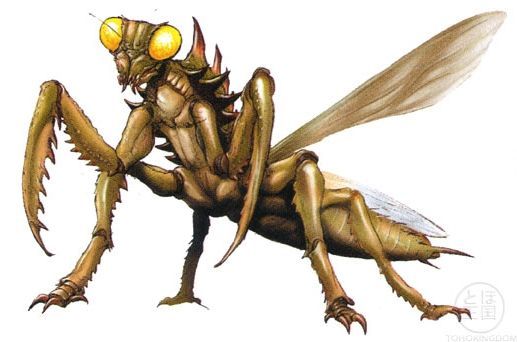
Haakapainiži is a boogeyman-like figure from Kawaiisu folklore. Though it can take several forms, Haakapainiži most often appears as a giant grasshopper with a basket on its back. It can also appear as a harmless old man.
Haakapainiži stalks the Kawaiisu lands of Southern California, snatching up wayward children and throwing them into its basket, devouring them later. Kawaiisu parents will warn their children to behave, as "Haakapainiži is coming."
Image source.
Monster master list.
Suggest a spook.
70 notes
·
View notes
Photo
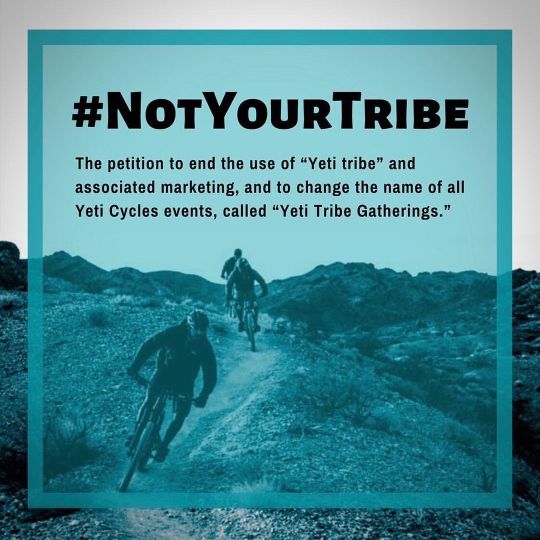
*The petition #NotYourTribe is endorsed by Indigenous outdoor advocates and cyclists* • As the founder of CZ, a Kawaiisu descendant of Tejon Tribe, I stand in solidarity with our Diné relative @renay.h. •⠀⠀⠀⠀⠀⠀⠀⠀⠀ Although the origins of the term “Tribe” come from European colonization and dehumanization of non-European societies, in the United States, the term “Tribe” is inherently linked to the genocide committed by the United States against the Indigenous communities who pre-date the existence of this country. Tribes have survived hundreds of years of violence and systematic erasure. Therefore, when non-Indigenous people use the term “Tribe” to describe a group of people with a common interest, it belittles the history, experience, and unique political status of Indigenous people in the United States as tribal nations, that have inherent political sovereignty and the right to self-governance. It also contributes to the exotification, cultural appropriation, and cultural erasure of tribal nations. Companies like @yeticycles who profit from the use of the term “tribe” as a trend are benefitting from the use of an identity that actual Tribal members have been, and continue to be, systematically oppressed and killed for. ⠀⠀⠀⠀⠀⠀⠀⠀⠀ Allies please join us in signing the petition #NotYourTribe to tear down the barrier of Indigenous erasure and stand with us in solidarity to proclaim that WE ARE STILL HERE and stand as many distinct tribal nations with a unique political status in the United States. ⠀⠀⠀⠀⠀⠀⠀⠀⠀ Learn more. Sign. Share. *link in bio ⠀⠀⠀⠀⠀⠀⠀⠀⠀ https://www.change.org/NotYourTribe_yeticycles ⠀⠀⠀⠀⠀⠀⠀⠀⠀ #NotYourTribe #yeticycles #yetitribe #mtb #nowyouknow #bethechange #indigenous #indigenoussolidarity #indigenoussolidaritywithblacklivesmatter https://www.instagram.com/p/CCTqHKVl8IM/?utm_medium=tumblr
#notyourtribe#yeticycles#yetitribe#mtb#nowyouknow#bethechange#indigenous#indigenoussolidarity#indigenoussolidaritywithblacklivesmatter
0 notes
Photo

(via » Reservations Open for Tours at Tehachapi Native American Village Site WalkingShield)
California State Parks is taking reservations for the spring tour season at Tomo-Kahni State Historic Park in Tehachapi, site of a Kawaiisu Native American village.
#american indians#americanindians#american indian#americanindian#native americans#nativeamericans#native american#nativeamerican#indigenous people#indigenouspeople#indigenous
3 notes
·
View notes
Text

Red Rock Canyon State Park is located in Kern County, east of Bakersfield and just north of the site of Edwards Air Force Base. I never even knew this barren but beautiful place existed before I watched this episode of California’s Golden Parks! I’m not sure if I’ll ever make it down there — but there’s clearly a lot more fascinating history about the area than Huell was able to cover in just 30 minutes.
Located just off highway 14, Red Rock Canyon State Park features scenic desert cliffs, buttes and spectacular rock formations. The park is not only rich in natural beauty, but has a deep human history as well. From the native Kawaiisu Indians, who left petroglyphs, to the 1870s 20-mule team freight wagons that stopped for water. There are also the remains of 1890s-era mining operations, and the area has been the site for a number of movies.
(Click on the linked image below to see the video.)

The Adventure Continues… Red Rock Canyon State Park Red Rock Canyon State Park is located in Kern County, east of Bakersfield and just north of the site of Edwards Air Force Base.
0 notes
Photo

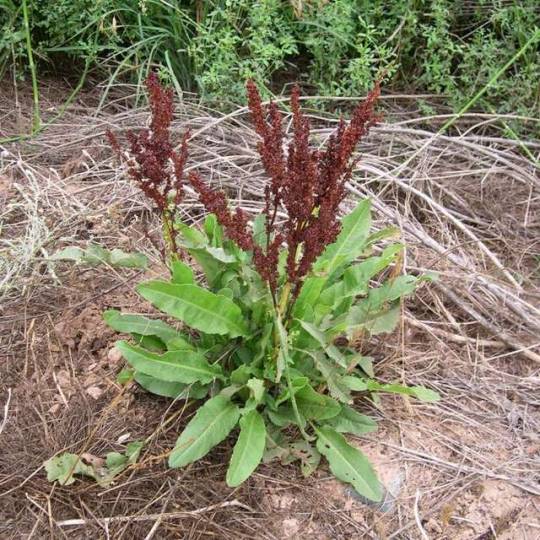
Curly Dock / Romaza crespa
Rumex crispus
Though not native to the Americas -- another carry-over from Europe -- this plant is well-established in its various medicinal uses both here and in its homeland. It grows in woodlands readily, and spreads so easily it may be classified as an invasive weed.
The Blackfoot used the mashed root pulp for swellings and sores. The Cherokee took an infusion of the root for dysentery, constipation, lung hemorrhage, blood conditions, and fluid imbalance; used the juice of the root as a salve for skin problems; fed the beaten roots to horses with sick stomachs; rubbed the leaves in the mouth for sore throat; applied a wet poultice of the pounded dried root to wounds and sores; ate the inner stems and leaves; and extracted a yellow dye by boiling the aerial plant. The Chippewa applied a poultice of the dried, pounded root to ulcers, swellings, cuts, and itches. The Choctaw boiled the wounded, dried roots to yield a yellow dye. The Cocoa ate the seeds. The Ohlone used a decoction of the plant for urinary problems and ate the leaves and seeds. The Dakota applied a poultice of the crushed green leaves to boils to draw out the pus. The Delaware used the root as a blood purifier and jaundice. The Iroquois used the stalks for rheumatism; took a decoction of the plant for bowel trouble, intestinal colds, and as an emetic before sporting events; took a decoction of the roots for intestinal colds, cramps, upset stomach, abdominal pains, and to encourage pregnancy; and made a poultice to apply for swelling and pain caused by yellow fever. A decoction of the plant was also used as a wash for the face, hands, and clothes as love medicine. The Kawaiisu made a porridge from the seeds and roasted the stems and ate the inner pulp. The Micmac used an infusion of the roots as a purgative. The Mohegans ate the cooked leaves to purify the blood and made a tonic from the roots. The Navajo used the whole plant as a ceremonial emetic, used it for fainting, dusted the dried powdered leaves on sores, and used a cold infusion of the leaf as a wash for mouth sores. The Ojibwa consumed the boiled seeds for diarrhea, used the root to close and heal cuts, smoked the seeds with kinnikinnick to lure game, and applied a poultice of the crushed root to sores and abrasions. The Paiute applied a poultice of the pulped root to rheumatic pains and swellings as well as burns and bruises, and took a decoction of the roots (or ate the peeled raw roots) for stomach disorders and venereal disease. The Nlaka’pamux used the plant as a cough medicine. The Yavapai placed a fresh or boiled root (or swished with a decoction) against a toothache. The Yuki washed sores with a leaf and seed decoction. The Zuñi used an infusion of the root for athlete’s foot and applied a poultice of the powdered root to sores, rashes, and skin infections.
Dock leaves and stems make a healthful vegetable and are high in Vitamins A and C as well as iron and potassium. They should always be boiled in a few changes of water and eaten in moderation to avoid consuming a large amount of oxalic acid. Do NOT consume any part of curly dock if you are breastfeeding or prone to kidney or bladder stones. The high iron content of the plant give it an application in managing anaemia. Most parts of the plant are laxative in nature, and this should be kept in mind when eating the plant or using it medicinally. It is best used externally, and tends to be soothing for skin conditions, especially ones causing itching. The root contains the highest concentration of medicinal compounds, though all parts may be used.
Dock brings love, luck, peace, and transformation. I associate it with the gods Ianus and Mercurius, the element Earth, the astrological sign Pisces, and the Sun.
26 notes
·
View notes